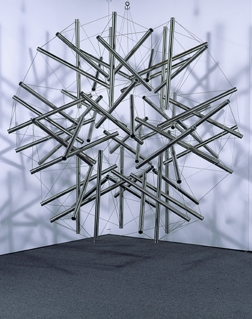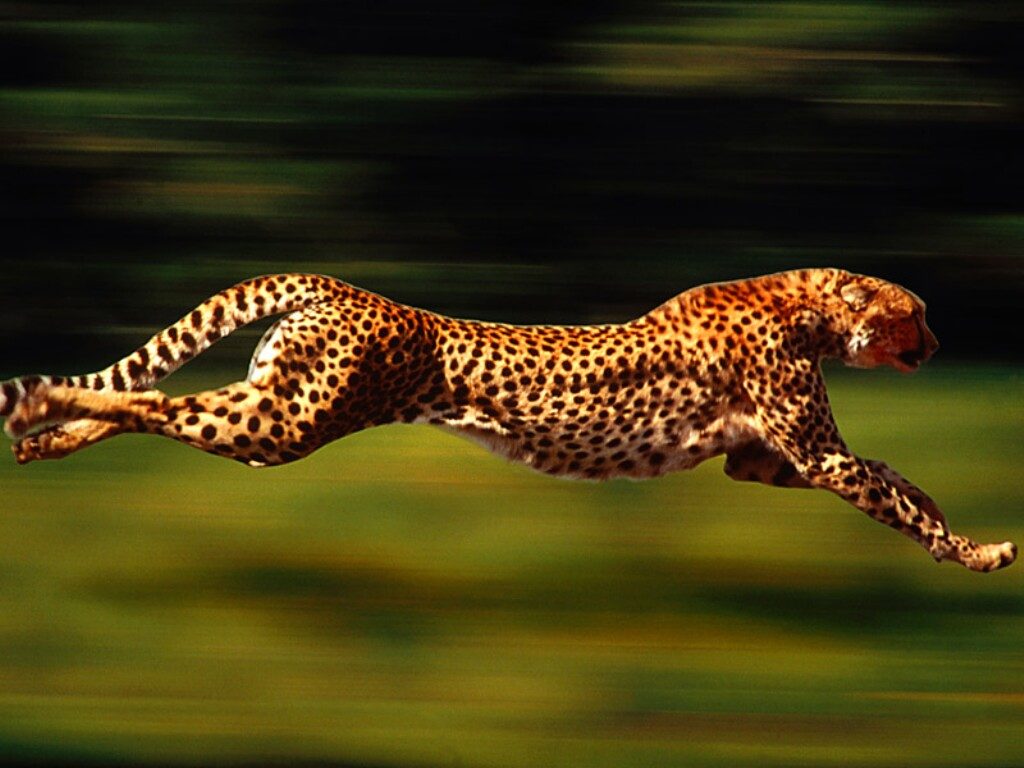
INTRODUCTION
Our standard view of human physiology is established on mechanical principles, with our joint articulations modeled as either a “hinge”, “ball” or “slide”. Muscles are described as providing linear actuation over these articulations using basic geometrical formulas. However, this model incompletely explains what is observed. For example, an Elephant should not be able to support its weight on its legs, or a Bee fly, leaving what is actually going on as something of an open question. There is a model for describing biomechanics based on load distribution in structures where none of the compressional attributes touch. This model is called Tensegrity, and when applied to organisms, Biotensegrity. Tensegrity biomechanics are much more dynamic than what is possible to model using basic mechanical principles and encompass the scope of structures/functions observed in advanced animals. Although basic mechanical principles retain their utility for modeling joint function, Tensegrity principles greatly clarify structure and function for us as operators of our bodies, or as therapists working with clients, opening the opportunity to engage with the world through our bodies beyond the two-dimensional, planar model pre-tensegrity biomechanics proffers.
The two most prominent pioneers of Tensegrity were the polymath R. Buckminster Fuller and artist Kenneth Snelson. Fuller’s Geodesic Domes and Snelson’s internationally acclaimed sculptures are prime examples of this exploration. (Geodesic domes, while meeting the criteria of dynamic compression/tension, do not meet the criteria of not having any contact between compressional elements.) The interplay of tensional and compressional elements in a classic Tensegrity structure is most apparent in Snelson’s work, and to gain a better understanding of Tensegrity as it expresses in biological systems, a study of his portfolio is suggested. It is also suggested that an opportunity to experiment with any Tensegrity model should be taken advantage of as it is the best way to grasp how these mechanical principles are at play in our bodies.
In more primitive vertebrates like fish, the principles of Biotensegrity are challenging to observe. These vertebrates appear to use their musculoskeletal systems to apply force in a manner approximating our traditional view of biomechanics – exerting linear tensional and compressional forces to move along a line. They appear to have less structural cohesiveness than what is observed in more advanced animals like Mammals – they are kind of squishy. Once Vertebrates crawled onto land, and more significantly when they started loading their body weight through their legs, Tensegrity Principles came to play a significant role. Mammals achieved tactical advantages by fully embodying the potentials of these principles, enhancing their range of motion and how much power they could exert. In Primates, the study of the mechanics of bipedal gait is illuminated by the application of the principles of Tensegrity. It seems reasonable that as creatures evolved, always seeking the most efficient strategy or tactic for movement, they would stumble into Tensegrity engineering principles and fully exploit their utilization to give themselves ” a leg up”.

Human Beings do not walk using innate principles, but rather move in the manner in which they think they should. This is because they have an ability rarely found among vertebrates, they can “edit” their automatic movement patterns and override them using conscious, intentional behaviors. These conscious movement patterns are more akin to habits than to automaticities and are learned and adapted through our lives. These habitual patterns of movement almost invariably lack organization around mechanical principles and are instead oriented to body language and observed “norms”. Walking in this manner puts undue wear and tear on our bodies, particularly given that we have strikingly unusual physiology: managing our mass by stacking it vertically. Because our movement patterns are learned, if so motivated we can relatively easily modify them, provided that we have dependable information as to what to do. The conventional information resources we utilize to refine our posture and gait, originating from traditional mechanics, offer an imperfect representation. We can improve up to a point, but there is a whole level of movement dynamics rarely seen in people, which we see normalized in other Mammals. By integrating an understanding of Tensegrity principles into consciously changing how we stand and move we can capture this elusive quality, making it accessible to us. After working with these principles for some time we come to manage our mass so well that we can feel almost weightless, having to reach for the ground with each step instead of pushing ourselves up and over the ground.
The following papers elucidate the principles of Tensegrity as they apply to biological systems (Biotensegrity), facilitating integrating Tensegrity principles into how we stand and move:
TENSEGRITY DETAILS
There are many excellent examples of Tensegrity principles applied to our built environment. A suspension bridge where the roadway is held in tension by the cables, and indirectly connected to the towers is a good example of the economy, resilience, and strength of Tensegrity. A bicycle wheel is another example in which the spokes (in tension) stabilize the rim of the wheel (in compression), creating a rigid, but lightweight wheel. In living systems, tensegrity principles are found everywhere. However, they are not as obvious because their mechanical principles are embedded inside self-contained living systems.
There is a more in-depth discussion of Tensegrity Principles here:
TENSEGRITY DETAILS
TRIANGLES AND TETRAHEDRA
The patterns we employ for standing and moving are not innately genetically optimized but rather embodied through early childhood observations and experiments – we learn to walk. The cultural milieu within which these skills are acquired significantly influences the nuances of our strategies and tactics for posture and gait. Embedded in this cultural influence is our traditional understanding of biomechanics, which this writer sees as emerging from the age of the machine. (Consider how differently people from developed and emerging countries stand and walk.) Integrating an understanding of tensegrity biomechanics into our motor planning for standing and moving can be as transformational as reframing other perceptual constructs that bear influence on our frameworks for awareness, like our understanding of time, gravity and spatial dynamics. Motor planning initiated from embodying an understanding of the power of three-dimensional tensegral dynamics in our bodies facilitates minimizing wear and tear on our physiology, optimizing regeneration, and recovery from injury, and maximizing efficiency, energy conservation, strength, and endurance.
Tensegrity dynamics can be complex (for example the sculpture in the image at the top of this page). It is very helpful to reduce or summarize the compressional and tensional relationships to foundational geometry – triangles in two dimensions and tetrahedra in three dimensions. Here is a paper on how these foundational geometries relate to Tensegrity biomechanics:
TRIANGLES AND TETRAHEDRA
TENSEGRITY AND CONNECTIVE TISSUES
Biotensegrity enhances and extends the traditional explanations of Neurophysiological posture and gait. A discussion of tensegrity mechanics observed in connective tissue, which is a foundational structural element of our bodies, can be found here:
TENSEGRITY AND CONNECTIVE TISSUES
The study of tensegrity benefits therapists addressing their client’s physical and other issues, facilitating a more holistic approach to therapeutic interventions.
GRAVITY
Biological systems utilization of Tensegrity would not have emerged if creatures did not have to address the effect of gravity. A discussion on the nature of this incessant force can be found here:
GRAVITY
EXPLORING TENSEGRITY
Another recommended activity for acquiring a working knowledge of Tensegrity is to build and play with Tensegrity structures. There are guidelines for undertaking this activity here:
EXPLORING TENSEGRITY
USING TENSEGRITY DIAGNOSTICALLY
Observing how one addresses the issues of standing and moving from an understanding of Tensegrity principles can elucidate opportunities for therapeutic intervention/education that can assist with maximizing potential and minimizing wear and tear.
USING TENSEGRITY DIAGNOSTICALLY
In addition to cultivating awareness of Tensegrity Biomechanics, training with the exercises in the FOOT DYNAMICS section will greatly assist in embodying fluid and regenerative expression into everyday movements.